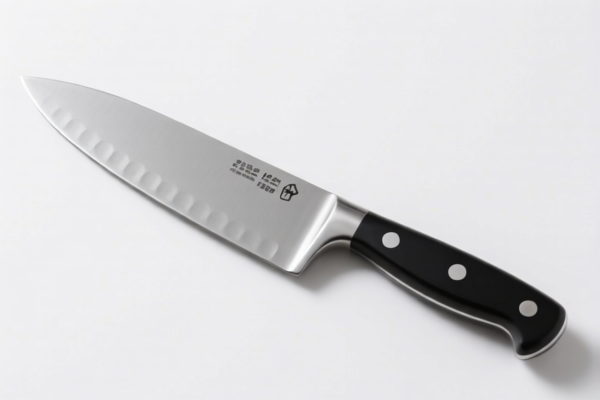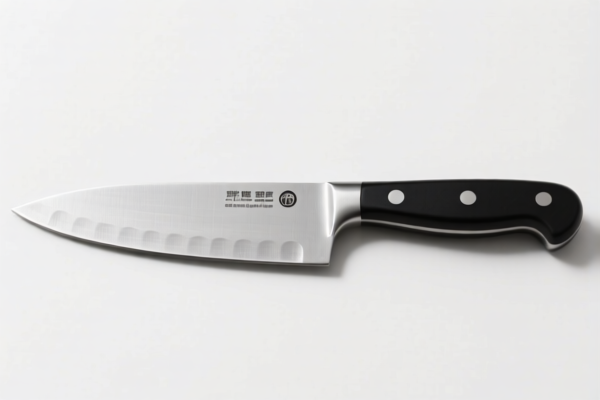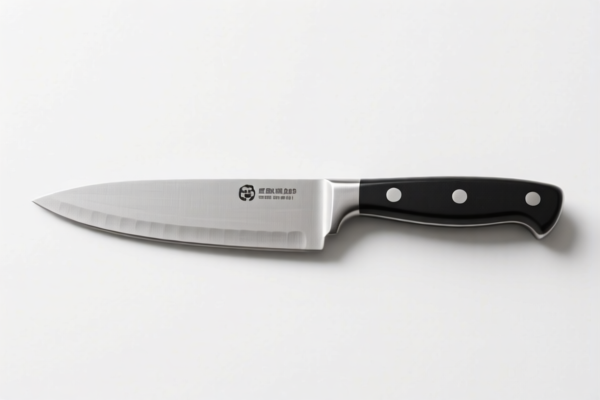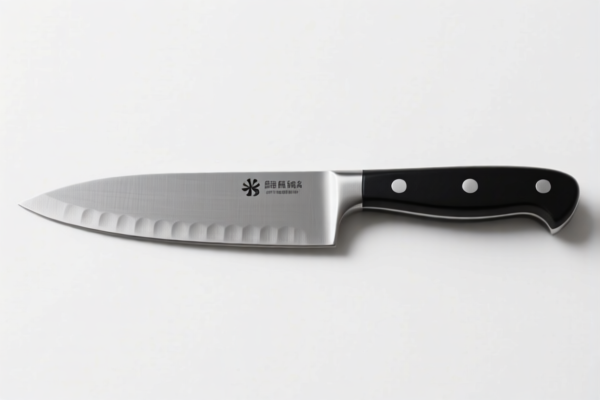| HS Code | Official Doc | Tariff Rate | Origin | Destination | Effective Date |
|---|---|---|---|---|---|
| 8211922000 | Doc | 0.8¢ each + 4.6%+37.5% | CN | US | 2025-05-12 |
| 8211929030 | Doc | 0.4¢ each + 6.1%+37.5% | CN | US | 2025-05-12 |
| 8208300060 | Doc | 55.0% | CN | US | 2025-05-12 |
| 8214906000 | Doc | 0.2¢ each + 3.1%+30.0% | CN | US | 2025-05-12 |
| 8214903000 | Doc | 1¢ each + 4.9%+37.5% | CN | US | 2025-05-12 |
| 8301406060 | Doc | 43.2% | CN | US | 2025-05-12 |
| 8306100000 | Doc | 35.8% | CN | US | 2025-05-12 |
| 8306100000 | Doc | 35.8% | CN | US | 2025-05-12 |
| 7323930060 | Doc | 57.0% | CN | US | 2025-05-12 |
| 7323930045 | Doc | 57.0% | CN | US | 2025-05-12 |
| 7326908688 | Doc | 82.9% | CN | US | 2025-05-12 |
| 7326908688 | Doc | 82.9% | CN | US | 2025-05-12 |




Mixing Knife
A mixing knife is a versatile culinary tool primarily used for combining ingredients, typically in baking or pastry applications, but also useful in general food preparation. Its design facilitates efficient and thorough incorporation of substances, differing from knives intended for cutting or chopping.
Material:
- Stainless Steel: The most common material due to its durability, resistance to corrosion, and ease of cleaning. Variations in steel quality affect sharpness and flexibility.
- Carbon Steel: Offers superior sharpness but requires careful maintenance to prevent rust. Less common for general mixing due to reactivity with certain ingredients.
- Plastic/Nylon: Used for non-reactive mixing, particularly with delicate ingredients or when avoiding scratching non-stick surfaces. Generally less durable than metal knives.
- Silicone-coated: Combines a metal core for stability with a silicone coating for non-reactivity and gentleness.
Purpose:
- Combining Dry & Wet Ingredients: Effectively blends flour, sugar, and other dry components with liquids like eggs, milk, or melted butter.
- Folding: Gently incorporates lighter ingredients (e.g., whipped cream, beaten egg whites) into heavier mixtures without deflating them.
- Cutting in Fat: Distributes solid fats (butter, shortening) into flour to create a crumbly texture for pastries like scones or biscuits.
- Stirring & Scraping: The shape allows for scraping the sides and bottom of bowls to ensure even mixing.
Function:
Mixing knives function through a combination of slicing, chopping, and folding motions. The blade's shape and flexibility are key to its effectiveness. Unlike a chef’s knife, a mixing knife isn’t designed for forceful chopping; instead, it relies on a more controlled and deliberate motion to combine ingredients.
Usage Scenarios:
- Baking: Essential for making cakes, cookies, muffins, scones, biscuits, and other baked goods.
- Pastry Making: Used in creating pie crusts, puff pastry, and other delicate pastry doughs.
- Sauce Making: Can be used for emulsifying sauces or combining ingredients in a roux.
- General Food Preparation: Useful for combining ingredients in salads, marinades, or dips.
Common Types:
- Straight-edged Mixing Knife: Features a long, straight blade with a rounded end. The most common type, ideal for general mixing and scraping. Blade lengths typically range from 8 to 12 inches.
- Offset Mixing Knife: The blade is angled upwards from the handle, providing better leverage and control, particularly for scraping the bottom of bowls.
- Dough Scraper/Bench Knife: While technically a scraper, it is often used for mixing and combining doughs, as well as dividing and transferring dough. Typically has a rectangular blade.
- Pastry Blender: Features multiple parallel blades designed specifically for cutting in cold butter into flour. Not a knife in the traditional sense, but performs a similar mixing function.
- Silicone Mixing Spatula (with a blade): While not a knife, these often have a rigid blade and are used for similar mixing and scraping purposes.
Based on the provided information, “mixing knife” can be classified under several HS codes, depending on its specific characteristics and intended use. Here's a breakdown of potential classifications:
-
8211.92.20.00: This code covers knives with cutting blades, serrated or not (including pruning knives), other than those of heading 8208, and blades and other base metal parts thereof. Specifically, it applies to “Other” knives having fixed blades with rubber or plastic handles, and is further defined as “Kitchen and butcher knives”. This is applicable if the mixing knife is designed for kitchen use with a fixed blade and a rubber or plastic handle.
- Chapter 82: Blades and cutting tools, including saws of all kinds.
- Heading 8211: Knives with cutting blades, serrated or not (including pruning knives), other than knives of heading 8208, and blades and other base metal parts thereof.
- Subheading 8211.92: Other knives having fixed blades.
- Subheading 8211.92.20: With rubber or plastic handles: Kitchen and butcher knives.
- Tax Rate: 0.8¢ each + 4.6%, 加征关税: 7.5%, 2025.4.2后加征关税: 30.0%. Total tax rate: 0.8¢ each + 4.6%+37.5%.
-
8211.92.90.30: Similar to the above, this code also covers knives with cutting blades, but applies to “Other” knives having fixed blades, specifically “Other” Kitchen and butcher knives. This is applicable if the mixing knife is designed for kitchen use with a fixed blade but does not have a rubber or plastic handle.
- Chapter 82: Blades and cutting tools, including saws of all kinds.
- Heading 8211: Knives with cutting blades, serrated or not (including pruning knives), other than knives of heading 8208, and blades and other base metal parts thereof.
- Subheading 8211.92: Other knives having fixed blades.
- Subheading 8211.92.90: Other: Kitchen and butcher knives.
- Tax Rate: 0.4¢ each + 6.1%, 加征关税: 7.5%, 2025.4.2后加征关税: 30.0%. Total tax rate: 0.4¢ each + 6.1%+37.5%.
-
7323.93.00.60: This code covers table, kitchen or other household articles and parts thereof, of iron or steel; iron or steel wool; pot scourers and scouring or polishing pads, gloves and the like, of iron or steel. Specifically, it applies to “Other” of stainless steel Cooking and kitchen ware, further defined as “Other” Kitchen ware. This is applicable if the mixing knife is made of stainless steel and is intended for kitchen use.
- Chapter 73: Articles of iron or steel.
- Heading 7323: Table, kitchen or other household articles and parts thereof, of iron or steel.
- Subheading 7323.93: Other: Of stainless steel Cooking and kitchen ware.
- Subheading 7323.93.00: Other: Kitchen ware.
- Tax Rate: 2.0%, 加征关税: 0.0%, 2025.4.2后加征关税: 30.0%. Total tax rate: 57.0%.
-
7323.93.00.45: Similar to the above, this code also covers table, kitchen or other household articles and parts thereof, of iron or steel; iron or steel wool; pot scourers and scouring or polishing pads, gloves and the like, of iron or steel. Specifically, it applies to “Other” of stainless steel Cooking and kitchen ware, further defined as “Other” Cooking ware. This is applicable if the mixing knife is made of stainless steel and is intended for kitchen use.
- Chapter 73: Articles of iron or steel.
- Heading 7323: Table, kitchen or other household articles and parts thereof, of iron or steel.
- Subheading 7323.93: Other: Of stainless steel Cooking and kitchen ware.
- Subheading 7323.93.00: Other: Cooking ware.
- Tax Rate: 2.0%, 加征关税: 0.0%, 2025.4.2后加征关税: 30.0%. Total tax rate: 57.0%.
It is important to determine the material composition (e.g., stainless steel, other metal) and handle type (rubber/plastic or other) to accurately classify the mixing knife.
Customer Reviews
No reviews yet.